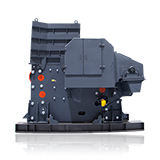How to Build an Optimal Quarry Plant?
Quarry development is a complex, multidisciplinary operation that demands careful balancing of blasting, crushing, loading, and transport to maximize productivity and minimize costs. The pursuit of lower costs and higher yields often leads managers to focus on individual processes. However, groundbreaking insights reveal that the true path to optimization lies in a holistic view. This article explores four critical conclusions from quarry development studies and the four decision-making pillars essential for crafting the optimal operational strategy.

Four Key Conclusions for Quarry Development
1. Optimal Shot Rock Fragmentation: Not Too Fine, Not Too Coarse
A common misconception in quarry operations is that finer fragmentation always leads to better outcomes. However, when viewed from the perspective of overall product cost, there exists an optimal shot rock fragmentation size. Excessive fragmentation may reduce crusher wear and improve throughput but can significantly increase blasting costs and generate excessive fines, which often have little or no value.
Conversely, overly coarse fragmentation can overload crushers, reduce throughput, and increase energy consumption and maintenance costs downstream. The optimal fragmentation balances blasting costs, crushing efficiency, and subsequent handling costs, ensuring the entire process chain operates cost-effectively.
2. Oversize Boulder Frequency
While the average fragmentation size is important, the frequency of oversize boulders is a critical and often overlooked metric. The presence of even a few oversized rocks has a disproportionately large impact on capacity and cost.
Each oversize boulder requires secondary breakage (e.g., a hydraulic hammer or drop ball), which is a slow, expensive, and high-wear process. This creates a bottleneck, halting loading and crushing activities, idling equipment, and starving the primary crusher. Consequently, the overall throughput of the quarry plummets while operating costs soar. Minimizing their frequency is paramount to smooth, efficient operation.
3. The Fine Balance of Drillhole Diameter and Fines Generation
Blast design parameters, particularly drillhole diameter, influence the amount of fines generated during blasting. Smaller drillholes tend to produce less fines, which is beneficial because fines often represent waste material that cannot be economically processed or sold.
However, reducing drillhole diameter may increase drilling time and costs. Quarry managers must carefully evaluate whether the reduction in fines justifies the additional drilling expense, especially in scenarios where fines have limited or no value in downstream processes.
4. Crushing Cost Stability
A pivotal finding for cost-management is that when a crushing method is fixed (e.g., a specific jaw and cone crusher setup), the crushing cost share of the total product cost remains remarkably stable, regardless of changes in the K50 fragmentation value.
This implies that attempts to reduce costs solely through improving fragmentation may have limited impact on crushing expenses. Instead, more significant cost savings can be achieved by optimizing other stages such as blasting design, loading efficiency, and haulage logistics.

Four Essential Decision Criteria for Optimal Quarry Development
Developing the most cost-effective and productive quarry operation requires a holistic approach considering multiple interacting factors. The following four criteria guide decision-making to select the optimal quarry development plan.
1. Rock Type
The rock type is the undeniable starting point for all planning. Its mechanical properties, particularly its abrasiveness and compressive strength, dictate every subsequent choice. The approach to crushing hard, abrasive granite is fundamentally different from that for soft limestone.
- Abrasive Rock (e.g., Granite, Trap Rock): Requires equipment designed for high wear resistance (e.g., cone crushers with specific liner alloys), slower processing speeds, and higher maintenance budgets.
- Less Abrasive Rock (e.g., Limestone): Can efficiently utilize impact crushers, allowing for higher throughput and different product shape characteristics. Ignoring rock type in equipment selection and process design is a recipe for catastrophic downtime and exorbitant wear-part costs.
2. Site-Specific Factors: Quarry Life and Investment Capacity
The life of the quarry and available capital investment significantly influence equipment selection and process design. Short-term quarries prioritize rapid extraction and may favor mobile crushing plants and simpler blasting patterns to reduce upfront costs.
Long-term operations, by contrast, benefit from investing in fixed, high-capacity crushing stations, in-pit crushing systems, and advanced process control to maximize efficiency and reduce operating costs over the quarry's lifespan.
3. The Imperative of Whole-Process Optimization
Optimizing quarry performance requires an integrated approach encompassing blasting, crushing, loading, hauling, and stockpiling. Improvements in one stage, such as blasting, must be evaluated in the context of their effects downstream.
For example, a blasting design that produces smaller fragments may reduce crusher wear but increase fines generation, which can complicate screening and washing processes. Conversely, focusing solely on crushing efficiency without addressing haulage logistics may result in bottlenecks and higher costs.
A whole-process optimization ensures that changes in one stage do not inadvertently increase costs or reduce capacity elsewhere.
4. The Strategic Advantage of In-Pit Crushing and Mobility
Finally, the strategic adoption of In-Pit Crushing and Conveying (IPCC) systems offers remarkable benefits for many operations. By placing the primary crusher directly in the pit and using conveyors to transport crushed material, quarries can:
- Dramatically Reduce Haulage Costs: Conveyors are far more energy-efficient than diesel trucks, especially on uphill hauls.
- Decrease Operating Costs: Lower fuel, tire, and truck maintenance expenses.
- Enhance Safety: Reduce the number of heavy trucks operating on-site.
- Reduce Carbon Footprint: Lower emissions from electric conveyors versus diesel fleets.
While IPCC requires higher upfront investment and careful planning, its long-term operational savings and capacity improvements often justify the cost, especially for large, long-life quarries.
Optimizing quarry development is a multifaceted challenge requiring a balance between fragmentation size, equipment selection, blasting design, and whole-process integration. The key conclusions outlined—optimal fragmentation, controlling oversize boulders, evaluating drillhole diameter trade-offs, and recognizing the limits of crushing cost reduction—highlight the complexity of cost and capacity management.
By carefully considering rock type, site-specific factors, whole-process optimization, and the advantages of in-pit crushing, quarry operators can devise development plans that maximize productivity, reduce costs, and enhance sustainability.







